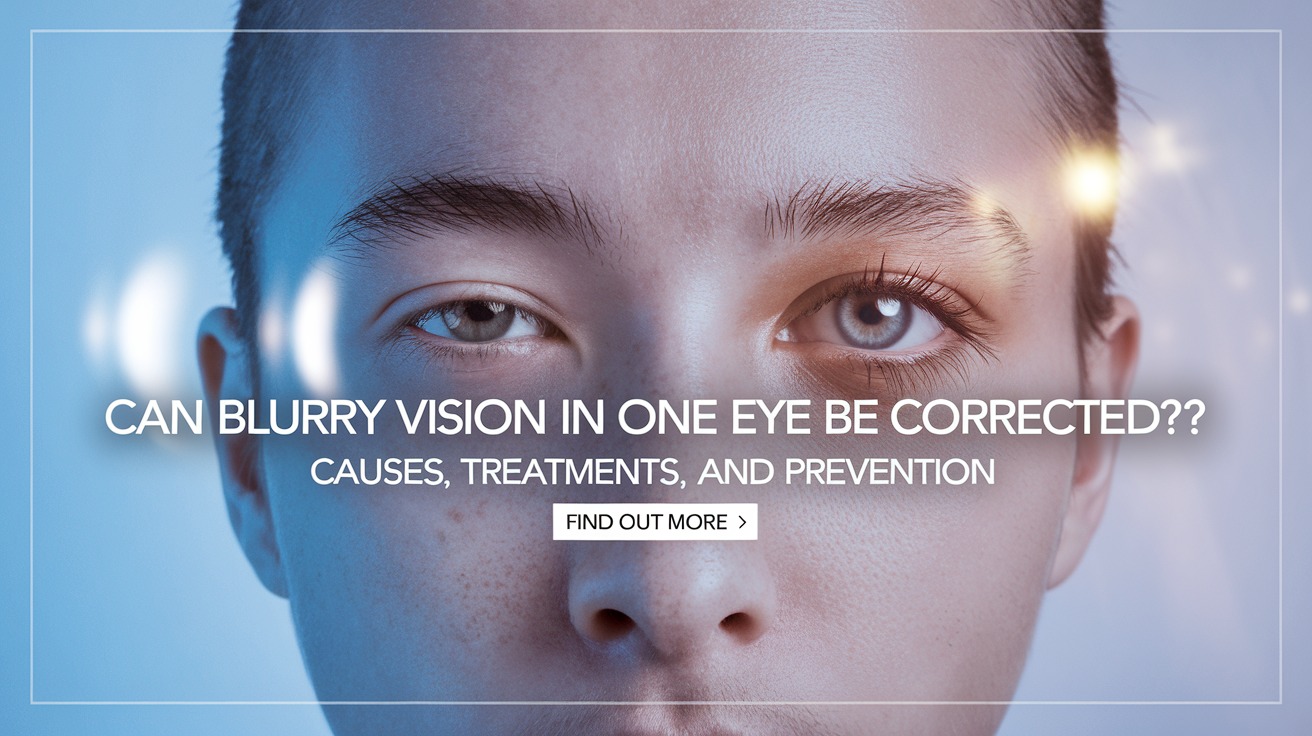
Yes, often this is correctable depending on the underlying issue. Typical reasons range from refractive errors, dry eyes or underlying problems such as cataracts or retinal problems. Treatment options vary from prescription glasses and lubricating eye drops to medical procedures. If the blurriness lasts or gets worse, eye exam is important to determining the actual cause and appropriate management.
What Causes Blurry Vision in Just One Eye?
Blurry vision in one eye can be temporary or indicate something more serious. Here are some of the common causes:
Refractive Errors
-
Myopia (Nearsightedness): Inability to see objects in the distance
-
Farsightedness (Hyperopia): Blurred vision when things are close; may also cause blurred vision when things are far away.
-
Astigmatism: Distortion caused by uneven curvature of the cornea.
-
Presbyopia: An age-related inability to focus on close objects.
Dry Eye Syndrome
(Blurry vision can also occur when your eye doesn’t make enough tears or if tears are poor-quality.) Symptoms include:
-
Graininess or burning feeling
-
Watery eyes
-
Intermittent blurriness
Strain from Screens or Reading
Extended screen time, or looking at tiny text for a long time may lead to temporary vision blurriness. Following the 20-20-20 rule (look away 20 feet from the screen every 20 minutes for 20 seconds) helps relieve strain.
Cataracts
A cataract forms when the eye’s natural lens becomes cloudy, leading to gradual vision blurriness. Common symptoms include:
-
Hazy or dim vision
-
Increased sensitivity to light
-
Difficulty seeing at night
5. Retinal Conditions
Fuzzy or distorted vision occurs when problems affect the retina of one eye. Some possible conditions include:
-
Retinal detachment functions as an urgent medical condition because the retina detaches from the back of the eye.
-
Macular degeneration Gradual central vision loss, often age-related.
-
The blood vessel problems in the retina which arise from diabetes constitute diabetic retinopathy.
6. Neurological Causes
A neurological problem such as can manifest as sudden vision loss in one eye.
-
Optic neuritis (inflammation of the optic nerve)
-
Stroke-related vision problems
-
Migraine with aura
7. Eye Infections and Inflammation
Several conditions can cause blurry vision with redness and pain or discharge of material from the eyes.
-
Uveitis (inflammation inside the eye)
-
Conjunctivitis (pink eye)
-
Keratitis (corneal infection)
How to Treat Blurry Vision in One Eye
The proper medical approach requires determining what causes the condition. Several proven solutions exist for dealing with this condition which I will describe in detail below.
1. Prescription Glasses or Contact Lenses
Wearing updated contact lenses or eyeglasses will immediately correct the refractive errors.
2. Artificial Tears and Hydration
Individuals with dry eye symptoms should use artificial drops while boosting their water consumption to regain eye moisture.
3. Establishing minimal screen time
-
Follow the 20-20-20 rule
-
Adjust screen brightness and contrast
-
Use blue light filters
4. Medical Treatments
-
Cataract surgery for lens replacement
-
Laser treatments or injections for retinal diseases
-
Eyes experiencing infection need antibiotic or anti-inflammatory drops.
5. Emergency Care for Sudden Blurry Vision
Immediately consult medical help when blurry vision appears suddenly or causes pain together with double vision or neurological symptoms.
Take Action for Clear Vision
A single blur in your vision can usually be treated however successful treatment requires a proper diagnosis of its origin. Customers affected by persistent or sudden blurriness should arrange an appointment at Refine Optometry, the best Palo Alto Optometry. Getting treatment as soon as possible will protect your vision for lasting benefits.